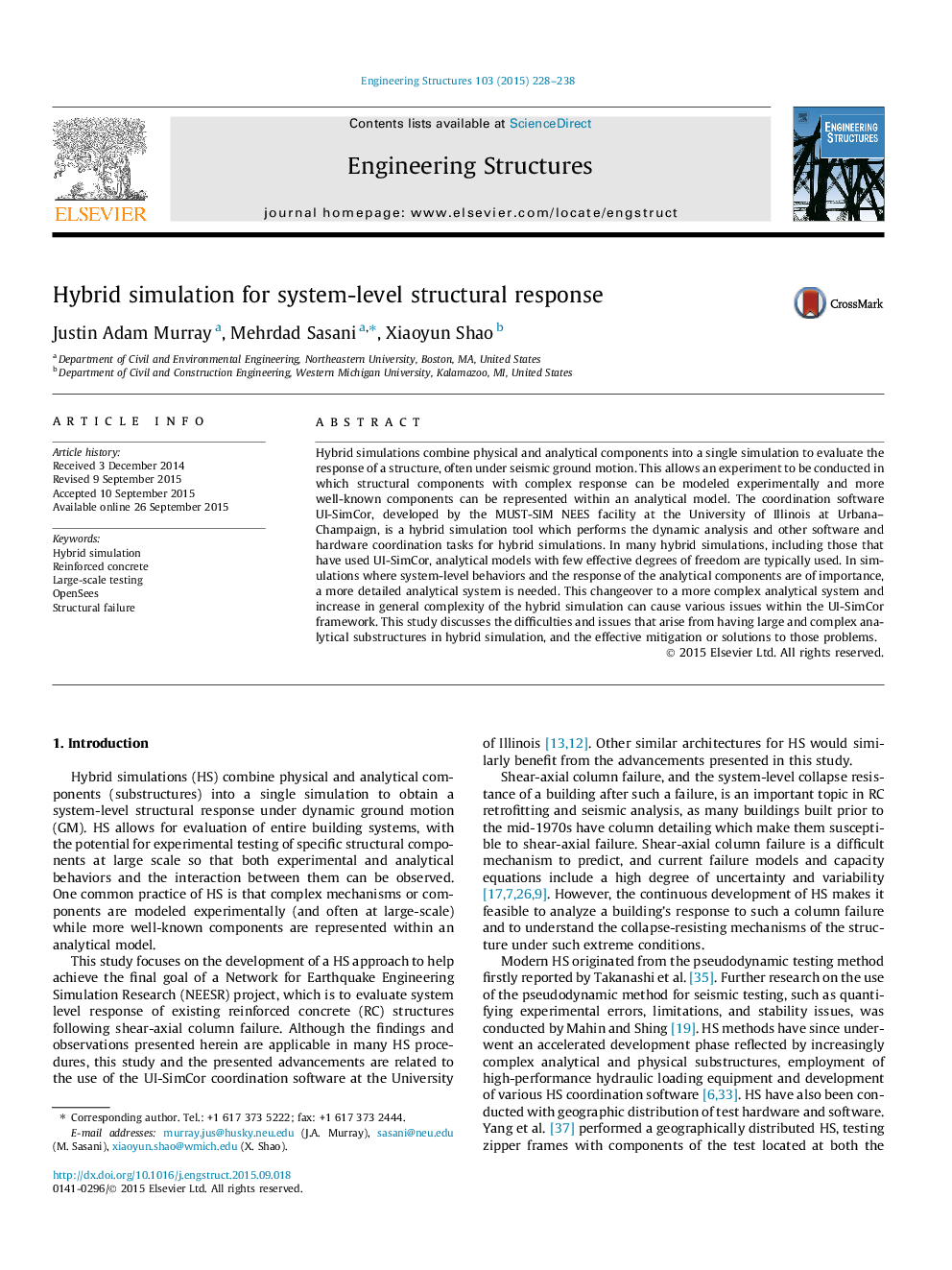| Article ID | Journal | Published Year | Pages | File Type |
|---|---|---|---|---|
| 265949 | Engineering Structures | 2015 | 11 Pages |
•Differences between multiple hybrid simulation architectures are quantified.•Issues with large analytical models in hybrid simulation are described.•New gravity loading procedure for hybrid simulation is developed to reduce computation.•Mitigation of oscillation and convergence issues in hybrid simulation are discussed.•Large-scale hybrid simulation of RC frame is conducted and analyzed.
Hybrid simulations combine physical and analytical components into a single simulation to evaluate the response of a structure, often under seismic ground motion. This allows an experiment to be conducted in which structural components with complex response can be modeled experimentally and more well-known components can be represented within an analytical model. The coordination software UI-SimCor, developed by the MUST-SIM NEES facility at the University of Illinois at Urbana–Champaign, is a hybrid simulation tool which performs the dynamic analysis and other software and hardware coordination tasks for hybrid simulations. In many hybrid simulations, including those that have used UI-SimCor, analytical models with few effective degrees of freedom are typically used. In simulations where system-level behaviors and the response of the analytical components are of importance, a more detailed analytical system is needed. This changeover to a more complex analytical system and increase in general complexity of the hybrid simulation can cause various issues within the UI-SimCor framework. This study discusses the difficulties and issues that arise from having large and complex analytical substructures in hybrid simulation, and the effective mitigation or solutions to those problems.
